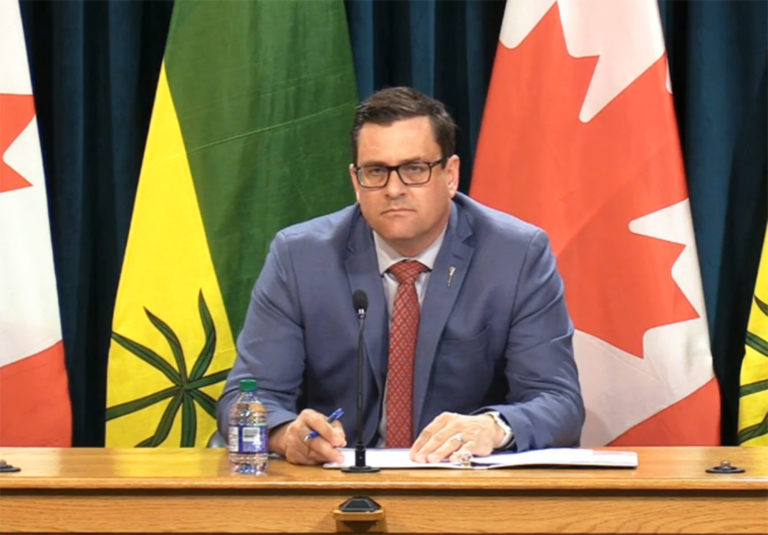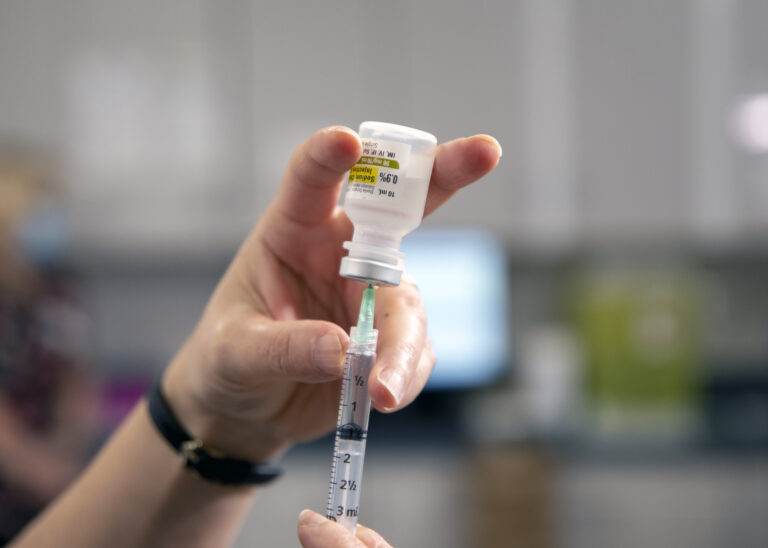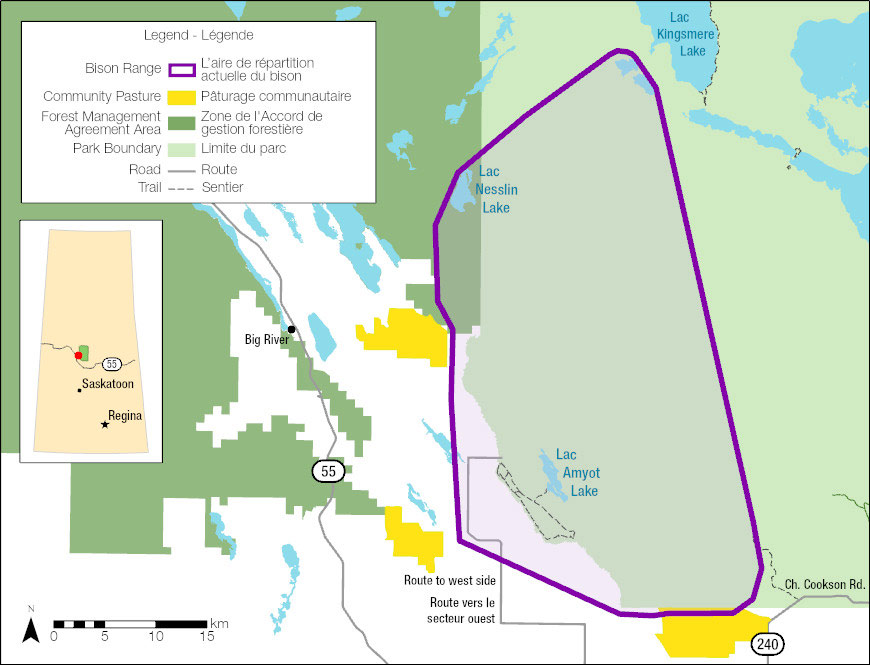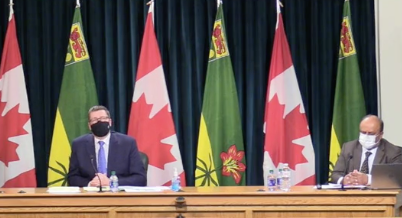Saskatchewan health officials reported two new deaths related to COVID-19 on Thursday.
The deaths were in the Regina and South West zones and in the 70 to 79 and 80 plus age groups, respectively.
The number of deaths related to COVID-19 has risen to 460.
On Thursday there were eight cases reported in North Central, which includes Prince Albert.
This was among a total of 293 cases reported in the province. Regina led the province with 87 new cases reported.
North Central 2, which is Prince Albert, has 32 active cases. North Central 1, which includes communities such as Christopher Lake, Candle Lake and Meath Park, has 23 active cases and North Central 3 has nine active cases.
There are currently 188 COVID-19 patients in hospital across the province. Of the 147 reported as receiving in patient care, six are in North Central. Of the 41 people reported as being in intensive care, one is in North Central.
The current seven-day average for new cases is 284, or 22.2 cases per 100,000 population. Of the 37,384 reported COVID-19 cases in Saskatchewan, 2,599 are considered active. Another 223 recoveries were reported on Wednesday, bringing the total number of recoveries to 34,325.
Since the start of the pandemic, 8,501 cases are from the North area (3,520 North West, 3,594 North Central and 1,387 North East).
There were 3,573 COVID-19 tests processed in Saskatchewan on April 12. As of April 13, there have been 717,486 COVID-19 tests performed in Saskatchewan.
There were 7,956 doses of COVID-19 vaccine administered in Saskatchewan bringing the total number of vaccines administered in the province to 315,405 .
There were 224 doses administered in the North Central Zone reported on Thursday. Doses were also administered in the adjacent North East, North West, Far North East, Far North West, Central West, Central East, South West, South East, South Central, Regina and Saskatoon.
There were 267 doses administered with zone of residence information pending.
In an effort to continue to protect residents as quickly as possible, the eligible age for booking vaccination appointments online or by telephone will be lowered to 48 years starting at 8:00 a.m. Friday, April 16.
According to the province, 56 per cent of residents age 50 plus have received their first dose.
48 variants of concern identified in North Central
There are now 48 confirmed variants of concern (VOC) cases identified by the province in the North Central zone, which includes Prince Albert, as of April 15.
This was among 4,183 variants of concern identified by screening in Saskatchewan to date. Other regions with identified cases included Regina, Saskatoon, Far North East, Central West, Central East, South West, South Central and South East. There are currently 37 cases with area of residency pending.
There rare now four variants identified in the adjacent North East zone.
Regina led the province with 2,673 identified VOCs.
These have previously been reported as “presumptive positives” but all screening tests will be considered confirmed VOCs for the purposes of public reporting and contact investigations.
There were no new lineage results reported today. Of the 1,435 VOCs with lineages identified by whole genome sequencing in Saskatchewan, 1,426 are B1.1.1.7 (UK) and nine are B1.351 (SA).
The Regina zone accounts for 1,131 (79 per cent) of the VOC cases with confirmed lineage reported in Saskatchewan.
Drive Thru vaccination clinics open to residents 48 to 54 on Friday
As of today, all drive thru and walk-in COVID-19 vaccination clinics will be available to residents 51-54 years. The Prince Albert drive thru opened again Thursday with hours of operation of 9 a.m, to 7 p.m.
Starting Friday, all vaccination drive thru clinics will expand eligibility to residents from 48-54 years.
The Prince Albert drive thru is located at the Thorpe Industries Warehouse, 1 Pine Street, east of the Provincial Forest Fire Control Center- North of Prince Albert on Highway 2. Direction signs are posted.
There will be no public washrooms on site.
Over 2,000 shots were administered when it was open between April 2 and 9.
The Regina COVID-19 vaccine drive thru will be available to residents 46-54 years starting Friday, April 16.
All drive thru clinics are first come first serve.
11 active cases of COVID-19 in youth in North Central
On Thursday the province released the updated numbers on COVID-19 cases in youth. The total active cases in youth provincially in all locations are 661. Nine have no known location and 661 have a location reported.
The province releases the update on the numbers each Thursday.
Currently in the North Central zone, which includes Prince Albert, there are 11 active cases in youth. Last week there were 151 tests performed across the North Central zone.
North Central 2, which is Prince Albert, has five active cases in youth.
North Central 1, which includes communities such as Christopher Lake, Candle Lake and Meath Park, has four active cases and North Central 3 has two active cases.
Cumulative tests performed since Sept. 7, 2020 in the North Central zone is 8,131.
Provincially there is a 13.4 per cent test positivity rate in youth.
There were 4,181 tests performed in total in the province in the last week.
The cumulative number of tests performed since Sept. 7, 2020 is 102,312.
Pharmacy pilot project to begin in late April
On Wednesday the province announced that they are preparing to offer COVID-19 vaccinations in pharmacies. In late April, select pharmacies will participate in a small-scale rollout to refine distribution and vaccination processes before larger volumes of vaccine are distributed to more pharmacies province-wide.
Appointments for pharmacy vaccinations are not yet available. Once participating pharmacies are ready to provide vaccinations, there will be additional information provided by the Ministry of Health and pharmacies will communicate directly with the public.








